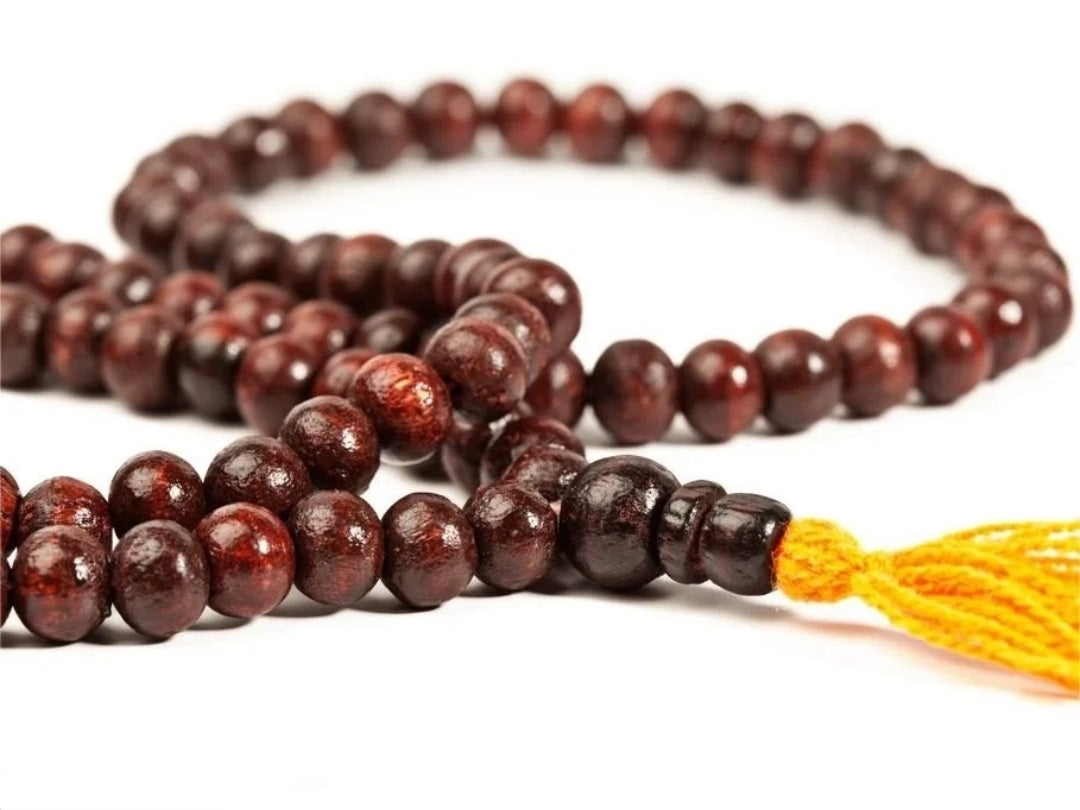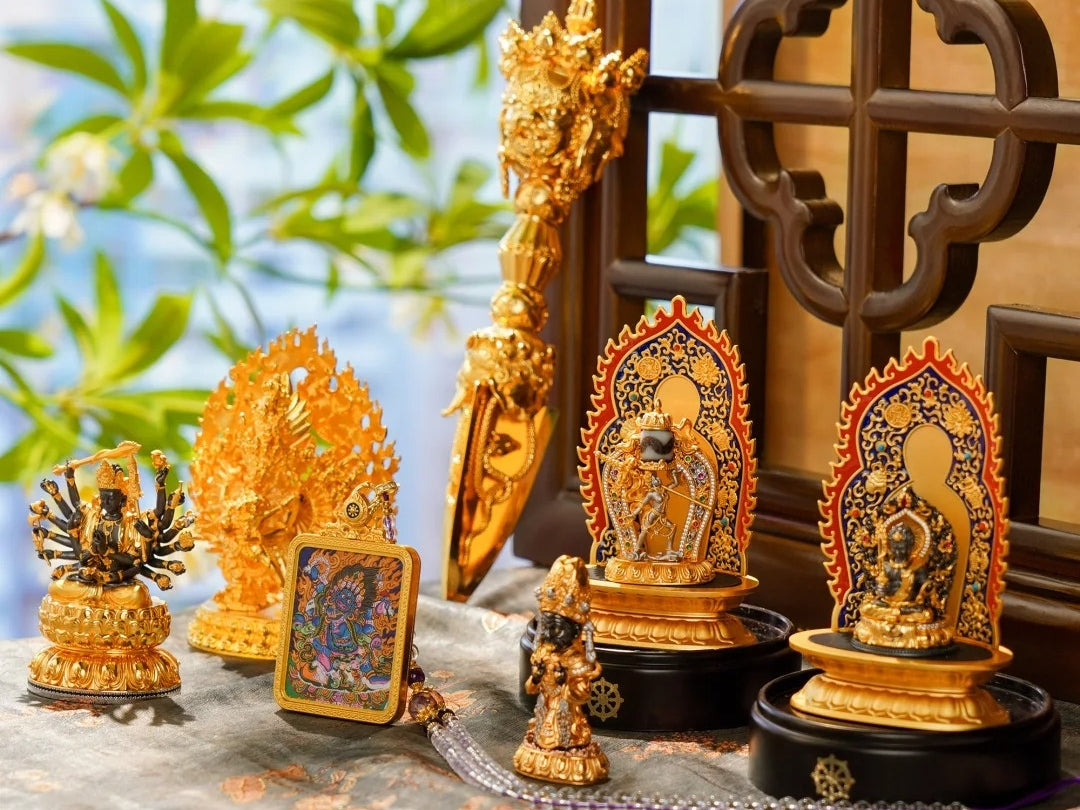Thangka painting is a dense visual language—layers of story, geometry, color, and ritual meaning packed into a single panel. In recent years, a thoughtful movement has emerged among contemporary jewelers and designers to translate that visual language into minimalist jewelry: pared-down pendants, subtle rings, and small enamel pieces that suggest a Thangka rather than replicate it. When done well, minimalist Thangka jewelry makes sacred imagery accessible without flattening its meaning. Below I unpack what typically gets simplified, why designers choose restraint, and how ethical choices preserve symbolism while inviting new audiences to wear and reflect.

What designers simplify — and why it works
Full-scale Thangka composition is built from multiple focal elements: the central deity, a halo or mandorla, attendant figures, geometric mandalas, and written mantras. Minimalist work strips this down to what reads best at jewelry scale:
-
Central silhouette: Instead of a fully painted deity, designers use a single-line outline, a stylized profile, or a quiet icon—just enough to cue recognition. This keeps the piece legible at small sizes and respects the focal role of the deity.
-
Halo or radiance: A thin circular frame or concentric ring often replaces elaborate halos, evoking sacred light without competing with everyday wear.
-
Mantra hinting: Short mantra bands, single-syllable engravings, or micro-script along a ring’s inner surface suggest devotional practice without overwhelming the form.
-
Mandala geometry: Designers borrow a single geometric element—a center point, quartered circle, or simplified lotus—to echo balance and structure.
-
Selective color: Where Thangka uses many mineral pigments, minimal pieces often limit color to one accent—turquoise inlay, a lapis dot, or a single enamel field—to preserve visual focus and durability.
Why simplify? Jewelry must be wearable. Too much detail becomes blurred or fragile at pendant scale; simplified forms communicate instantly and leave room for personal reflection rather than literal reproduction.
Materials and techniques that suit restraint
Contemporary designers translate Thangka palette and form using materials and methods that respect both craft and longevity:
-
S925 sterling silver and gold vermeil for clean lines and gentle patina.
-
Vitreous enamel or cloisonné for small, durable color fields that recall mineral pigments without their fragility.
-
Laser engraving for precise mantra bands or silhouette details, performed subtly on inner ring surfaces or the back of pendants.
-
Lost-wax carving at small scale to capture a simplified high-relief deity or lotus in a tactile, wearable form.
The right technique keeps the work honest: the aesthetic reads contemporary while nodding to centuries-old composition rules.
Design ethics: translating without trivializing
Minimalism makes sacred art approachable—but simplification brings responsibility. Designers and brands that work respectfully follow a few consistent ethics:
-
Know the iconography. Understand what a deity represents (compassion, protection, wisdom) so the design choice aligns with meaning. Avoid casual depictions of wrathful protectors in playful contexts.
-
Avoid decontextualization. Pair pieces with short explanatory notes—what the symbol means, a suggested way to wear it, and a humble reminder that a symbol can be devotional for some wearers.
-
Credit sources and makers. If a design is inspired by a regional Thangka school or a living artist, acknowledge that influence and, when possible, collaborate or compensate.
-
Prioritize intention over trend. Ask whether a design invites reflection or simply uses the image as décor. The former preserves dignity; the latter risks appropriation.
-
Test with communities. When feasible, seek feedback from Tibetan or Himalayan practitioners and artists to avoid missteps and ensure cultural nuance is respected.
Good minimalist design doesn’t erase complexity; it honors it by inviting deeper inquiry.
Guidance for buyers and makers
For buyers: choose pieces that explain their inspiration and avoid wearing sacred images in contexts that might seem disrespectful (e.g., swimwear, costumes). If a pendant contains a mantra, treat its care mindfully—clean and store it with respect.
For makers: build relationships with artisans and communities, document your design influences, and include educational cards with each piece. Small acts—like a simple printed explanation of iconography—help transform a consumer purchase into a respectful exchange.
Final note: accessibility through restraint
Minimalist Thangka jewelry offers a bridge: it brings sacred visual motifs into everyday life in a way that’s readable, durable, and contemplative. When designers pair aesthetic restraint with cultural awareness—clear labeling, honest sourcing, and thoughtful intent—minimalist pieces can become meaningful keepsakes rather than mere fashion statements. They allow wearers to carry a quiet reminder of compassion, wisdom, or protection, and they open a gentle door for learning about a much wider visual and spiritual tradition.






